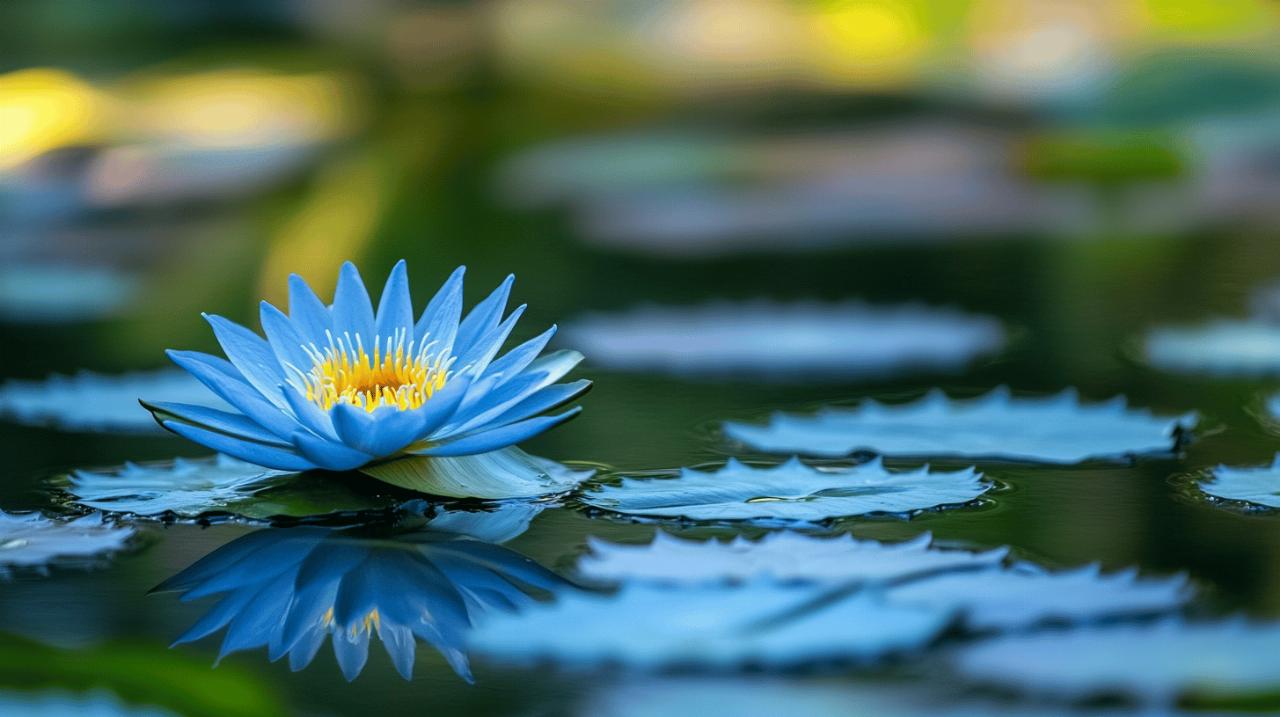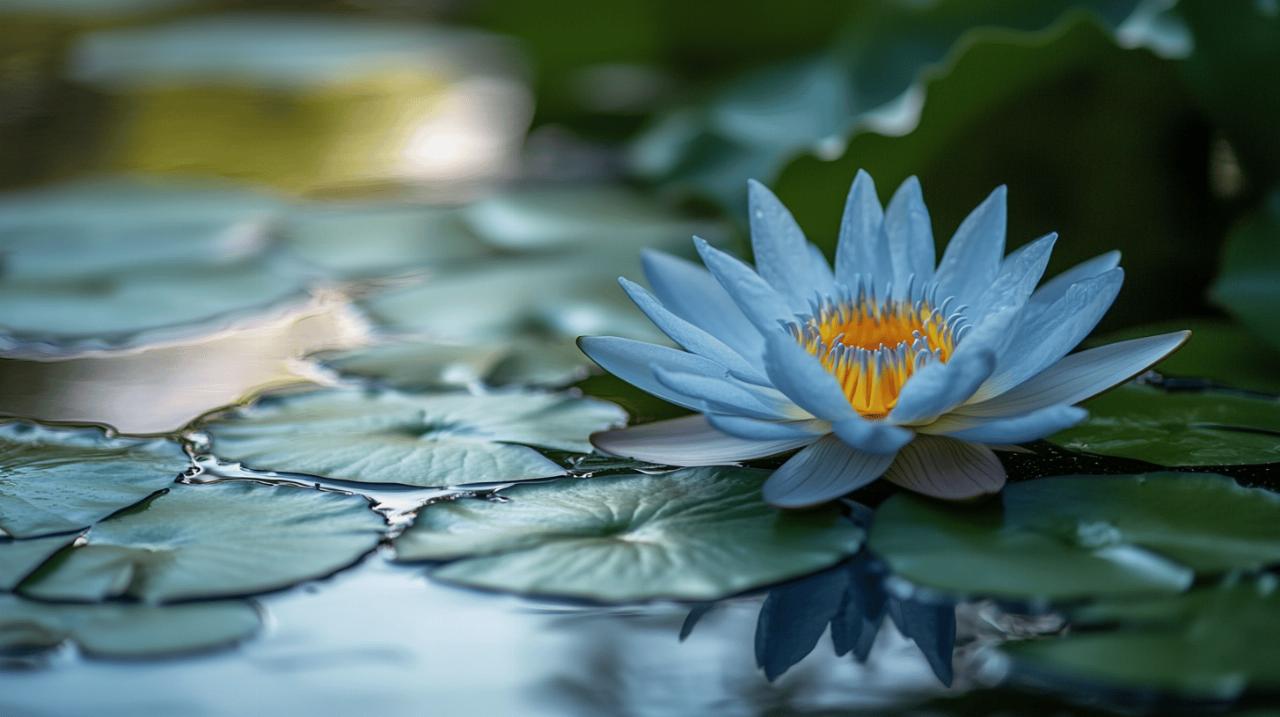Blue Lotus Flower Uses, Benefits and Safety: Essential Knowledge for Home Cultivation and Harvesting
For those intrigued by the enchanting world of aquatic flora, few plants capture the imagination quite like the blue lotus flower. This stunning water lily, with its delicate azure petals and rich historical tapestry, offers a fascinating journey into both ancient traditions and modern horticultural practices. Whether you are considering cultivating this remarkable plant at home or exploring its traditional applications, understanding its origins, requirements and safety considerations is essential for a rewarding experience.
Understanding the Sacred Blue Lotus: Origins and Historical Significance
Ancient Egyptian reverence and spiritual symbolism
The blue lotus flower, known scientifically as Nymphaea caerulea, holds a revered place in the annals of ancient history, particularly within the civilisation of Egypt and the broader Nile Valley. This aquatic bloom was far more than a simple ornamental plant; it was deeply woven into the spiritual and cultural fabric of Egyptian society. The flower was closely associated with the sun, afterlife, rebirth and renewal, embodying powerful concepts that resonated throughout their belief systems. It was linked to Horus, one of the most significant deities in the Egyptian pantheon, further cementing its sacred status. Beyond its symbolic importance, the blue lotus was also thought to possess medicinal benefits, including pain relief, sedative effects and aphrodisiac qualities, making it a versatile component in traditional healing practices. Its presence in art, religious ceremonies and daily life underscores the profound impact this elegant bloom had on ancient cultures, not only in Egypt but also in China and India, where it was similarly employed for both medicinal and spiritual purposes.
Botanical characteristics of Nymphaea caerulea
From a botanical perspective, Nymphaea caerulea is a striking water lily distinguished by its bright blue flowers and lush green leaves. This aquatic perennial thrives in shallow water environments, making it well-suited to pond cultivation in suitable climates. The plant is native to regions with warm, humid conditions and abundant sunshine, reflecting its origins in the tropical and subtropical zones of Southeast Asia and the Nile Valley. The flowers themselves are not only visually captivating but also contain active compounds, including the alkaloids nuciferine and apomorphine, which are believed to be responsible for the plant's psychoactive and medicinal properties. Apomorphine acts as a dopamine agonist, potentially instilling feelings of happiness and euphoria, while nuciferine is thought to induce a sense of calmness. Additionally, the blue lotus is rich in antioxidants, including flavonoids such as quercetin, kaempferol and myricetin, contributing to its potential health benefits. The combination of its aesthetic appeal and historical significance makes Nymphaea caerulea a truly unique addition to any water garden.
Comprehensive home cultivation guide for blue lotus
Optimal growing conditions and water requirements
Successfully cultivating the blue lotus flower at home requires careful attention to its environmental needs, as this aquatic plant thrives under specific conditions. The first consideration is ensuring access to a tropical or subtropical climate with ample sunshine, as the plant demands a minimum of six to eight hours of direct sunlight daily for optimal growth. Water temperature is equally critical; the ideal range falls between twenty-one and twenty-seven degrees Celsius, which should be maintained consistently to promote healthy development. The depth of the water also plays a vital role, with the plant preferring a depth between one and three feet. If you are setting up a dedicated pond, it should be at least three feet deep and five feet wide, though a fifteen-gallon container can serve as an alternative for smaller spaces. The water itself should be slightly acidic to neutral, with a pH level ranging from 6.5 to 7.5, to create the ideal chemical environment for root health. Ensuring that the water is well-circulated and free from excessive algae buildup will further support the plant's vigour and flowering capacity.
Propagation methods and seasonal care considerations
Propagation of the blue lotus is best undertaken in spring, once the water temperature has reached approximately twenty-one degrees Celsius, as this warmth encourages robust root establishment. The plant can be propagated through rhizome division or by planting seeds, though rhizome division tends to yield faster results. When planting, ensure that the rhizomes are placed in well-draining soil enriched with organic matter, as this provides the necessary nutrients for initial growth. Regular fertilisation is essential for maintaining vigour throughout the growing season; applying a balanced, water-soluble fertiliser every three to four weeks will support continuous flowering and foliage health. As the plant matures, it will produce multiple blooms, with harvest cycles occurring approximately three to four times a year, each lasting between thirty and forty days. During these periods, you can expect to harvest ten to twenty kilogrammes of flowers per hectare, depending on the size and health of your cultivation setup. Seasonal care should also include monitoring for pests and diseases, though the blue lotus is generally resilient when grown in suitable conditions. As autumn approaches and temperatures begin to drop, it may be necessary to protect the plant or bring container-grown specimens indoors to ensure survival through the colder months.
Harvesting techniques and preparation methods
Identifying the right time to harvest flowers and petals
 Timing is everything when it comes to harvesting the blue lotus flower, as picking the blooms at the correct stage ensures maximum potency and quality. The ideal time to harvest is three to four days after the flowers have fully opened, when the petals are vibrant and the alkaloid content is at its peak. Early morning is the preferred time for harvesting, as the flowers are freshest and the cooler temperatures help preserve their delicate structure. To harvest, carefully cut the stem just below the flower head using a sharp, clean blade, taking care not to damage the surrounding foliage or rhizomes. The flowers should be handled gently to prevent bruising, which can affect the drying process and the final product's appearance. If you are cultivating the plant primarily for tea or other preparations, it is worth noting that both the petals and the entire flower head can be utilised, depending on your intended use. The leaves and rhizomes also hold value in traditional medicine, though harvesting these components requires a different approach and timing to avoid compromising the plant's overall health and future flowering capacity.
Timing is everything when it comes to harvesting the blue lotus flower, as picking the blooms at the correct stage ensures maximum potency and quality. The ideal time to harvest is three to four days after the flowers have fully opened, when the petals are vibrant and the alkaloid content is at its peak. Early morning is the preferred time for harvesting, as the flowers are freshest and the cooler temperatures help preserve their delicate structure. To harvest, carefully cut the stem just below the flower head using a sharp, clean blade, taking care not to damage the surrounding foliage or rhizomes. The flowers should be handled gently to prevent bruising, which can affect the drying process and the final product's appearance. If you are cultivating the plant primarily for tea or other preparations, it is worth noting that both the petals and the entire flower head can be utilised, depending on your intended use. The leaves and rhizomes also hold value in traditional medicine, though harvesting these components requires a different approach and timing to avoid compromising the plant's overall health and future flowering capacity.
Drying, storage and preparation for traditional uses
Once harvested, the blue lotus flowers must be dried properly to preserve their active compounds and prevent mould or degradation. One traditional method involves hanging the flowers upside down in a well-ventilated, dark space for one to two weeks, allowing them to dry slowly and evenly. Alternatively, freeze-drying offers a more modern approach that retains a higher concentration of the flower's beneficial compounds and vibrant colour. Whichever method you choose, ensure that the drying environment is free from excessive humidity and direct sunlight, as these factors can compromise the quality of the dried product. After drying, store the flowers in airtight containers away from light and moisture to maintain their potency for several months. When preparing the flowers for use, one of the most popular methods is to steep one to two grammes of dried petals in hot water for five to ten minutes to create a soothing herbal tea. The resulting infusion is believed to promote relaxation, improve sleep and enhance mood, making it a favoured choice for those seeking natural remedies. The dried flowers can also be smoked, used in tinctures, or added to salads and other culinary creations, though it is essential to exercise moderation and awareness of the plant's effects when experimenting with different preparation methods.
Safety Considerations and Legal Status in the United Kingdom
Potential contraindications and responsible usage guidelines
While the blue lotus flower has been celebrated for its calming and mood-enhancing properties, it is crucial to approach its use with caution and responsibility. The plant contains psychoactive compounds that can induce feelings of euphoria and relaxation, but these effects vary significantly between individuals. Some users have reported experiencing mild side effects, including dizziness, nausea, vomiting and diarrhoea, particularly when consuming larger amounts or when the product is of inconsistent quality. More serious adverse reactions have also been documented; a case report from 2023 described five soldiers who consumed blue lotus in various forms, including vaping and infused wine, and subsequently experienced symptoms such as paranoia, agitation, hallucinations and unusual behaviour. These incidents underscore the importance of starting with a low dose and carefully observing how your body responds. Individuals who are pregnant or breastfeeding should avoid the blue lotus flower entirely due to the lack of comprehensive research on its safety in these populations. Similarly, those taking medications, particularly those affecting the central nervous system or cardiovascular function, should consult with a qualified healthcare professional before incorporating the plant into their routine, as interactions could pose risks.
Current UK regulations and sourcing from reputable suppliers
In terms of legal status, the blue lotus flower occupies a somewhat ambiguous position across different jurisdictions. In the United Kingdom, the plant is not currently classified as a controlled substance, meaning it is legal to cultivate, sell and purchase for personal use. However, this status can vary significantly in other countries; for instance, the flower is illegal in Poland, Russia and Latvia, whilst it is also prohibited in Louisiana within the United States. Despite its legality in the UK, it is important to note that the Food and Drug Administration in the United States has not approved the blue lotus flower for consumption, highlighting the need for consumers to exercise caution and conduct thorough research before use. When sourcing the plant or its dried flowers, it is imperative to choose reputable suppliers who can provide information on the origin, quality and testing of their products. Ensuring that the blue lotus has been properly cultivated, harvested and processed will help minimise the risk of contamination or adulteration with harmful substances. Some suppliers may offer laboratory testing services to verify potency and screen for common contaminants, which can provide additional peace of mind for those seeking to use the flower safely and responsibly.
